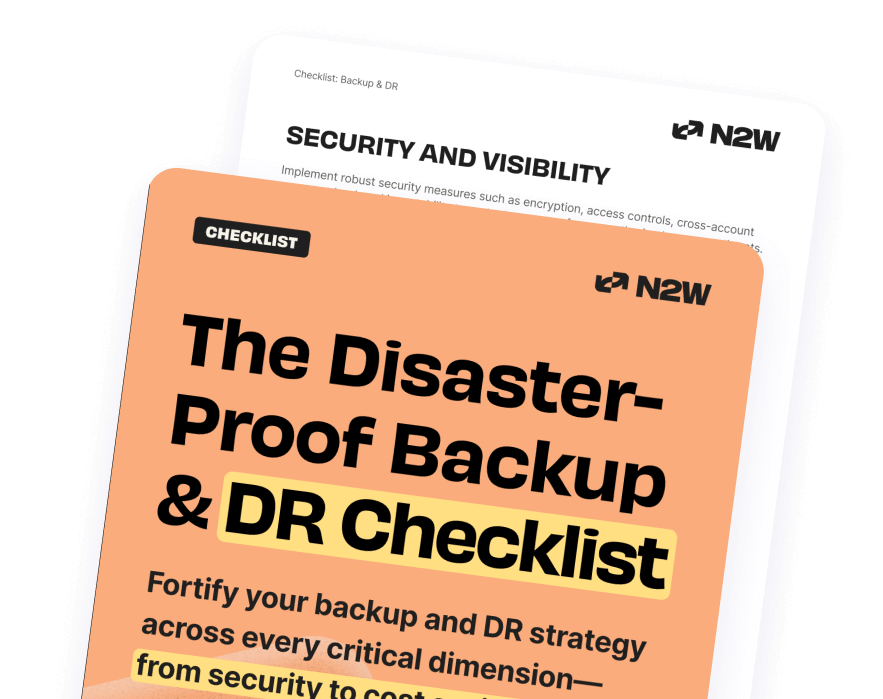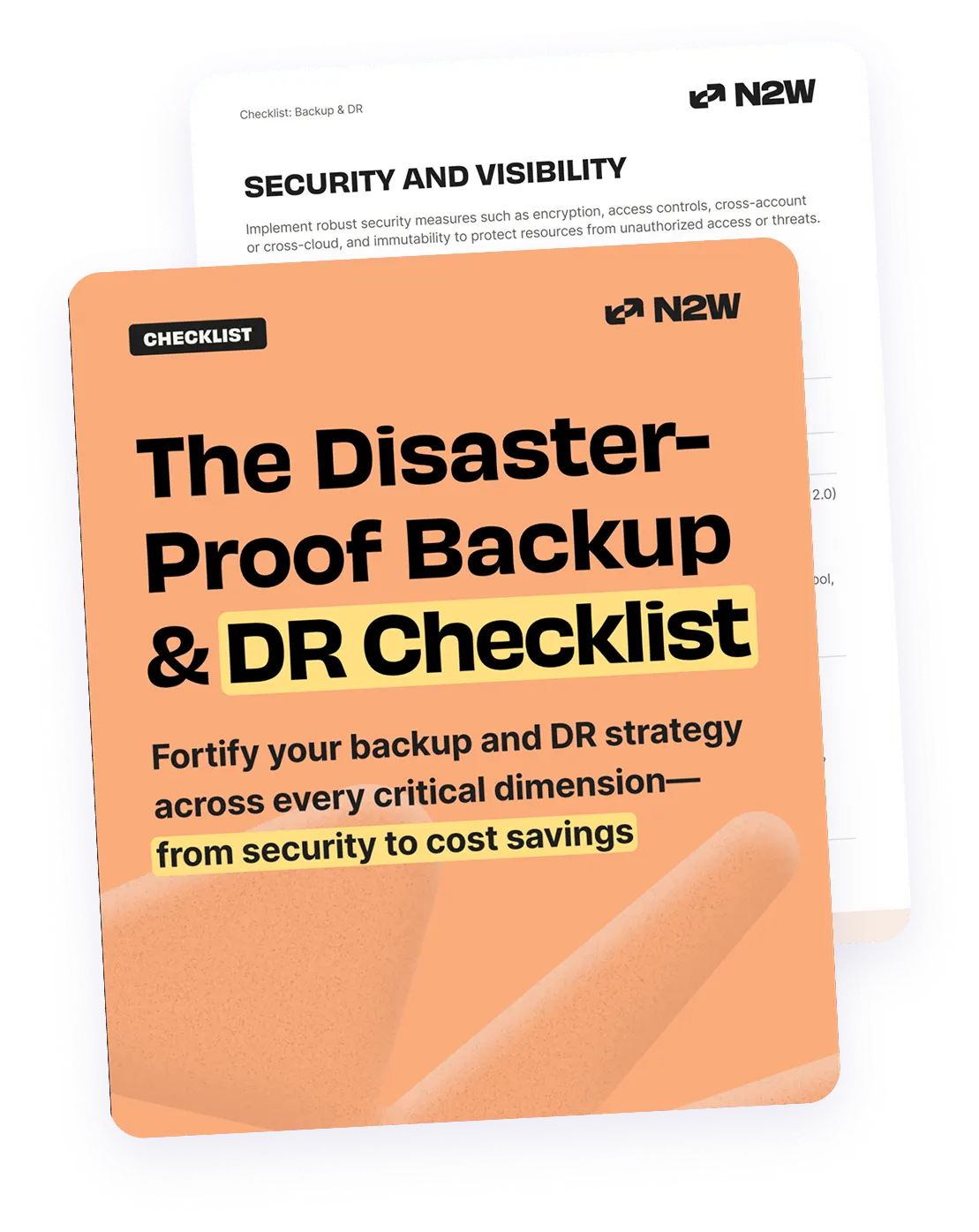In today’s highly interconnected and technology-driven world, businesses rely heavily on their IT systems to ensure smooth operations and uninterrupted service delivery.
However, the threat of unexpected disruption looms large, whether from natural disasters, hardware failures, or human errors. Businesses employ failover and disaster recovery (DR) strategies to mitigate these risks and minimize downtime.
In this article, we’ll explore the differences between failover vs disaster recovery and their significance in business continuity.
Comparing failover vs disaster recovery systems: understanding the key differences
Before diving into the details, it’s crucial to understand the distinction between failover and disaster recovery systems. Failover refers to automatically switching from a primary server or system to a secondary one when the former encounters a failure or experiences downtime.
Disaster recovery, on the other hand, encompasses a broader set of measures to restore critical business functions after a disaster. This could involve recovering data, applications, and systems after catastrophic events such as natural disasters, cyberattacks (like ransomware), or hardware failures.
Some key differences between both are:
Failover: swift transition to backup systems
Failover operations involve the rapid and automatic switching from a primary server to a secondary one in the event of failures or downtime. These failover processes are crucial for maintaining business continuity and minimizing service disruptions.
Disaster recovery: comprehensive restoration after disasters
Disaster recovery strategies encompass a range of measures aimed at recovering data, applications, and systems after catastrophic events. These solutions are crucial for businesses to bounce back from natural disasters like earthquakes, floods, or storms. By implementing robust disaster recovery plans, organizations can ensure the continuity of business operations and mitigate the impact of such events.
Failover: minimizing downtime and service disruption
Failover operations play a pivotal role in minimizing downtime and service disruptions. When a primary server experiences failures or downtime, failover systems swiftly redirect traffic to secondary servers or systems, ensuring uninterrupted access to critical applications and services.
By implementing failover solutions, businesses can minimize the impact on business operations, reduce the loss of productivity, and maintain customer satisfaction. Failover processes are essential for business-critical systems where even a short downtime can result in significant financial losses and reputational damage.
Disaster recovery: ensuring business continuity and resilience
Disaster recovery solutions are designed to ensure business continuity and resilience in natural disasters, system failures, or other disruptive events. Organizations can protect their production environments, critical data, and applications by implementing comprehensive disaster recovery strategies.
These solutions aim to recover business operations within specified recovery time objectives, minimizing the impact on business operations and ensuring a quick return to normalcy. Disaster recovery testing is crucial to validate the effectiveness of these strategies and identify any potential gaps or weaknesses in the recovery process.
Failover: automatic switching to secondary systems
Failover systems are designed to automatically switch from a primary server or system to a secondary one when failures or downtime are detected. This automatic failover process eliminates manual intervention, allowing quick and seamless transitions.
Virtual machines (VMs) and storage systems are critical components of failover solutions, enabling the high availability of data and applications to secondary systems. By implementing failover solutions, businesses can minimize service disruptions, even during primary server failures or unexpected downtime.
Disaster recovery: recovery of data, applications, and systems
Disaster recovery solutions encompass data, applications, and systems recovery after a disaster or disruptive event. These solutions are designed to restore critical business functions and ensure the continuity of operations. Disaster recovery failover processes involve:
- The activation of backup systems.
- The restoration of data from backups.
- The recovery of applications and systems.
By implementing disaster recovery solutions, businesses can protect their production environments, primary servers, and storage systems, minimizing data loss and enabling a swift return to normal business operations.
Fortify your cloud across every critical dimension.
- Efficiency + Optimization
- Security + Control
- Orchestration + Visibility

Disaster recovery strategies: building resilience and ensuring business continuity
To effectively address the challenges posed by unexpected disruptions, your organization must establish comprehensive disaster recovery plans. These plans serve as a roadmap to navigate the complexities of recovery, allowing organizations to bounce back quickly and resume normal operations.
A robust disaster recovery plan typically includes backup strategies, recovery time objectives (RTO), failover processes, and failback operations. Failover and disaster recovery systems play crucial roles within a disaster recovery plan. Failover mechanisms help ensure high availability during a disaster by quickly redirecting traffic to secondary systems.
Moreover, disaster recovery encompasses broader strategies for restoring production environments and critical services, including data replication, failover processes, and failback operations. Organizations must have robust disaster recovery plans to mitigate these risks. Two key terms often come up within disaster recovery: failover and disaster recovery.
Let’s explore the differences between these terms and their significance in the context of business continuity and IT resilience.
Availability: ensuring continuous access to critical systems
Availability refers to the state of being accessible and operational for users. In IT systems, high availability is crucial to minimize downtime and ensure uninterrupted access to critical applications and services. Failover and disaster recovery solutions contribute to achieving high availability, albeit in different ways.
Failover: Failover operations are designed to swiftly transition from a primary server or system to a secondary one when failures or downtime are detected. This automatic switching mechanism ensures that users can seamlessly access applications and services without experiencing significant disruptions. Failover relies on VMw and backup strategies to facilitate a smooth transition.
Disaster Recovery: Disaster recovery strategies encompass a broader set of measures to ensure business continuity and the availability of critical systems. In addition to failover mechanisms, disaster recovery solutions involve data replication, backup and restore processes, and redundant infrastructure. These strategies aim to recover the production environment and restore services within specified recovery time objectives (RTOs).
Replication: duplication for data resilience
Replication plays a vital role in both failover and disaster recovery systems. It involves creating and maintaining copies of data, applications, and systems to ensure data resilience and minimize data loss.
Failover: Failover operations often rely on synchronous replication, where data is replicated to a secondary system in real-time or near real-time. This ensures that the secondary system is always up-to-date and can seamlessly take over in case of a failure or downtime event.
Disaster Recovery: In disaster recovery, replication serves a broader purpose. It can involve various replication techniques, including synchronous and asynchronous replication. Synchronous replication offers greater data consistency but may introduce some latency, while asynchronous replication provides more flexibility regarding the distance between primary and secondary sites. Replication enables restoring critical data, applications, and systems during disaster recovery operations.
Businesses: protecting operations and ensuring continuity
Both failover and disaster recovery solutions are essential for businesses to safeguard their operations, maintain business continuity, and protect against potential losses caused by disruptions.
Failover: Failover solutions are particularly crucial for business-critical systems. They ensure that the transition to secondary systems is swift and seamless in a failure or downtime event, minimizing the impact on business operations. This is especially important for industries where even a short downtime can have severe financial and reputational consequences.
Disaster Recovery: Disaster recovery strategies encompass a comprehensive approach to protect businesses from various threats, including natural disasters, system failures, or cyberattacks. By implementing disaster recovery plans, companies can ensure the continuity of their operations, recover critical data and applications, and minimize the impact of disruptions on business-critical processes.
Standby: preparedness for recovery
Standby systems, such as hot, warm, and cold standby, play a significant role in both failover and disaster recovery operations. These systems are prepared in advance to facilitate recovery in the event of a failure or disaster.
Failover: Failover systems typically involve hot standby configurations, where secondary systems continuously run and synchronize with the primary system. This allows for instant failover in the event of a failure or downtime.
Disaster Recovery: Depending on the recovery requirements and cost considerations, disaster recovery solutions can incorporate various standby systems. Warm standby involves maintaining a partially configured secondary system, while cold standby involves having hardware and infrastructure available for recovery but not actively running. The choice of a standby system depends on factors such as RTOs, business criticality, and budget.
Cloud security: safeguarding failover and recovery processes
As businesses increasingly rely on cloud computing for their IT infrastructure, ensuring cloud security becomes paramount. Both failover and disaster recovery solutions leverage the cloud to enhance resilience and provide scalable and cost-effective options for recovery.
Failover: Cloud-based failover solutions offer on-demand resource allocation, geographic redundancy, and automatic scalability advantages. However, organizations must prioritize cloud security measures to protect their data and applications during failover operations.
Disaster Recovery: Cloud-based disaster recovery solutions, like N2WS Backup & Recovery, allow organizations to replicate and store critical data in geographically dispersed locations. This ensures data resilience and reduces the risk of data loss. Robust cloud security practices, including encryption, access controls, and regular vulnerability assessments, safeguard the failover and recovery processes.
Automatic failover: swift response to failures
Automatic failover mechanisms ensure near-zero downtime and a seamless transition from primary to secondary systems.
Failover: Failover processes are designed to automatically detect failures or downtime events and initiate the switch to secondary systems without manual intervention. This swift response minimizes service disruptions and maintains high availability for users.
Disaster Recovery: Automatic failover is an essential component of disaster recovery strategies. It enables organizations to respond quickly to failures or disasters, ensuring business continuity and minimizing the impact on operations. Automatic failover relies on continuous monitoring and detection of failure events, triggering the failover process to the secondary systems.
Failback: smooth transition to normal operations
After failover or disaster recovery operations, a smooth failback process is crucial to transition back to normal operations without data loss or service disruptions.
Failover: Failover solutions primarily focus on providing high availability during failover events. As such, failback operations may be less prominent within failover mechanisms.
Disaster Recovery: Failback operations are an integral part of disaster recovery strategies. They involve transitioning back to the primary production environment once the issues causing the failover or disaster recovery event have been resolved. A smooth failback process ensures data consistency, application integrity, and minimal disruptions to business operations.
Maximizing high availability with N2WS: achieving near-zero downtime and business continuity
High availability (HA) is critical for businesses to ensure uninterrupted access to their applications and services. Traditionally, achieving high availability involved setting up dual hot sites, which can be costly and complex to maintain. However, innovative solutions like N2WS Backup & Recovery have emerged, offering high availability without running hot in two locations.
The power of N2WS
N2WS is a leading provider of advanced disaster recovery solutions that enable organizations to achieve near-zero recovery time objectives (RTOs) and ensure business continuity. By leveraging cutting-edge technologies and strategies, N2WS offers a compelling alternative to traditional dual hot site setups.
Data replication and synchronization
N2WS utilizes efficient data replication and synchronization techniques to ensure critical data and applications are replicated to a secondary site. This secondary site acts as a failover location, ready to take over seamlessly in case of a primary site failure or downtime. Through continuous data replication, organizations can maintain up-to-date copies of their data, minimizing the risk of data loss and ensuring a smooth transition during failover operations.
Automated failover and failback
N2WS streamlines the failover and failback processes, automating the transition between primary and secondary sites. In case of a failure or downtime event, N2WS detects the issue and automatically triggers failover, redirecting traffic to the secondary site. This automated failover mechanism significantly reduces recovery time and minimizes service disruptions. Similarly, when restoring the primary site, N2WS facilitates a smooth failback process, ensuring a seamless transition back to normal operations.
Centralized management and monitoring
N2WS offers a centralized management platform that allows organizations to monitor and control their disaster recovery processes effectively. Administrators can easily configure, schedule, and manage replication, failover, and failback operations from a single interface. This centralized approach simplifies the management of high availability and provides visibility into the status of the disaster recovery environment.
Cost-effectiveness and scalability
One of the key advantages of N2WS is its cost-effectiveness compared to traditional dual hot site setups. With N2WS, organizations can achieve high availability without duplicating resources and infrastructure across multiple locations. This results in cost savings regarding hardware, maintenance, and operational expenses. Additionally, N2WS offers scalability, allowing businesses to expand their disaster recovery capabilities as their needs grow.
Achieving resilience: the importance of balancing failover vs disaster recovery
In IT infrastructure, understanding the difference between failover vs disaster recovery is crucial for organizations seeking to establish resilient systems and ensure business continuity. Failover mechanisms focus on providing high availability during downtime events, swiftly redirecting traffic to secondary systems.
On the other hand, disaster recovery encompasses a broader range of strategies to restore production environments and critical services during disruptions. While near-zero recovery time objectives (RTOs) offer significant benefits in minimizing downtime, businesses must carefully evaluate their specific requirements and implement a comprehensive approach that combines failover and disaster recovery systems.
By striking the right balance, organizations can mitigate risks, protect business operations, and achieve the desired levels of availability and recovery.

Ezra is the Sr. Director of Alliances and Partners at N2WS with more than 10 years of experience. Ezra enjoys long bike rides, cultivating rare semi-succulents, and building complex aquatic ecosystems.
